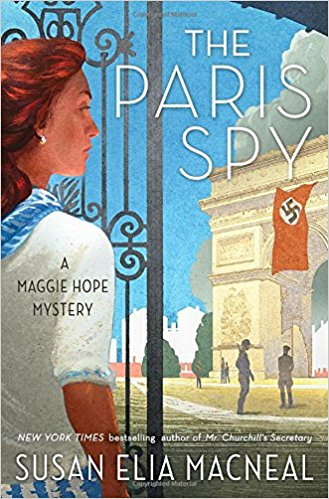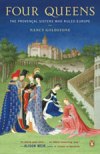 All month I’ve been reading Salem’s Lot by Stephen King as part of the #SalemAlong—a group read hosted by Melissa, Trish, and Care. It has been a blast! The book is an addictive page-turner, but also I’ve loved seeing everyone’s comments and reactions as they read via twitter.
All month I’ve been reading Salem’s Lot by Stephen King as part of the #SalemAlong—a group read hosted by Melissa, Trish, and Care. It has been a blast! The book is an addictive page-turner, but also I’ve loved seeing everyone’s comments and reactions as they read via twitter.
It’s not too late if you want to join in. It’s fast read, and #SalemAlong runs through Halloween. But beware this post has spoilers—something I usually try to avoid. So, *spoiler alert!*
FYI, per the page numbers: I bought the Anchor Books mass market paperback, because pulpy seems to fit Stephen King.
NOTE: You do not need to have read Dracula, The Haunting of Hill House, or any vampire lore, as King gives the reader all the needed clues and info—though one character is saved by a deep knowledge of monster comics.
p. 15 “ ‘Salem’s Lot” is short for Jerusalem’s lot. Nice ironic touch.
p. 21 Already hooked. The prologue was a spooky tease, but by the third page of the first chapter, I know I’m in for the haul. No surprise or sudden cliffhanger. It’s just that King’s writing is so darn readable.
p. 25 The creepy the Marsten house looms large!
p. 26 I’m invested in Ben—another likable guy in the vein of Barbie and Rusty from Under the Dome and Jake from 11/22/63.
p. 64 Chapter 3: The Lot (I). My favorite chapter follows a day in the Salem’s Lot, introducing the reader to different characters and to the rhythms of small-town life. I was fascinated by how different things were in Maine back in 1975. For example, Susan left an order on the door overnight for the milkman, who arrived each morning straight from the nearby dairy.
I would’ve been quite happy to read along and have no vampires. I felt the same way at the beginning of Under the Dome.
p. 101 “Barlow and Straker” This made me thing of Bram Stoker. Maybe that’s a stretch, but I got that connotation each time I read the names.
p. 106 “between then [next week] and October 30.” King likes to remind us that Halloween is on the horizon. This book starts late Sept and runs into October. (Under the Dome also took place in October.)
p. 188-122 Vintage King! Here he takes something ostensibly trite (being afraid of shadows while walking through the woods) and makes it terrifying! Instead of feeling that I had read or seen this before (which of course we all have), I was truly, palpably scared along with the two little boys.
p. 201 “That year the first day of fall (real fall as opposed to calendar fall) was September 28” Now the days start to get shorter and the nights get longer.
p. 223 “Understand death? Sure. That was when the monsters got you.” Foreshadowing from the mind of 12-year-old Mark Petrie.
p. 242 “Say, these kids aren’t going to eat me, are they?” Ben asks Matt the school teacher, in another little foreshadowing zinger.
p. 371 I got up and made sure to shut and lock all the windows of my house. No more reading this book at night!
 p. 422-435 Ok. I’m shouting at the book here. Just as King managed to make the overused spooky woods motif fresh and horrifying, inversely this scene seems so played … like it came out of a Scary Movie sequel. Why, why would anyone go to the vampire’s house at dusk?! Especially, why would a kid who had earlier proven so savvy in vampire knowledge? This whole scene annoyed me. Susan, who I had liked before, seemed really stupid here. I hate it when girls/women are stupid victims … and here is where I lost sympathy for Susan. Um, Darwin Award.
p. 422-435 Ok. I’m shouting at the book here. Just as King managed to make the overused spooky woods motif fresh and horrifying, inversely this scene seems so played … like it came out of a Scary Movie sequel. Why, why would anyone go to the vampire’s house at dusk?! Especially, why would a kid who had earlier proven so savvy in vampire knowledge? This whole scene annoyed me. Susan, who I had liked before, seemed really stupid here. I hate it when girls/women are stupid victims … and here is where I lost sympathy for Susan. Um, Darwin Award.
I don’t think this is the prevailing opinion, as there were lots of sighs and gasps for Susan on twitter. #SalemAlong
p. 473 “Sunset on Sunday, October 5, 1975, at 7:02 pm, sunrise on Monday, October 6 1975, at 6:49 am.”
This is a nice device with the countdown to sunset which King uses at times to remind the reader that sunset is getting earlier and daybreak later—longer nights! This especially resonated with me because I’ve also been watching the sunrise creep later and later. I hate dark mornings, and I’m counting the days until daylight savings begins on Nov 1.
p. 512 I would’ve grabbed a couple of bottles of the Médoc on my way out of the Marsten House.
Also, I liked this plot twist here, by touching on the myth that vampires can anticipate the future. The cat-and-mouse game with Barley ups the suspense/thriller aspect of the book. King keeps us hooked by integrating this with the horror story.
p. 520 “In the fall, night comes like this in the Lot:
The sun loses its thin grip on the air first, turning it cold, making it remember that winter is coming and winter will be long. Thin clouds form, and the shadows lengthen out. They have no breadth, as summer shadows have; there are no leaves on the trees or fat clouds in the sky to make them thick. They are gaunt, mean shadows that bite the ground like teeth.”
p. 576 So what happened to Father Callahan? Did he end up at a rave in the East Village?
p. 628 Wow. The “dissolution” scene reads like blow-by-blow a description of what happens to the Nazis at the end of Raiders of the Lost Ark. I’m wondering if this is just a coincidence? Or if Steven Spielberg had read Salem’s Lot (which came out six years before his movie) and was inspired either subconsciously or consciously. I’m not suggesting plagiarism, but more like a cinematic allusion, much the way rappers sample other music.
p. 652 October 1972 – June 1975
I always like the way King put the dates he spent writing each novel on the last page. I’ve noticed that the writing times are much shorter for his more recent books, like Under the Dome and 11/22/63, which each took about a year even though they are much longer. So he is picking up speed!
Overall, I highly recommend this read—especially fun during the run up to Halloween. It wasn’t as scary for me as The Shining (the movie … I have not yet braved the book). But I will confess that I tried not to read it at night. When I did, I was frightened enough to lock all my windows and wear my cross around my neck.
A thank you shout-out to readalong hosts Melissa, Trish, and Care. They are most welcoming, and there is still a week left if you want to join the #SalemAlong!
Next up for me is a sunny, fluffy read. The Diamond Caper, by Peter Mayle, takes place on the French Riviera—a perfect antidote to Stephen King!

Readalong of Salem’s Lot
Join the Salem’s Lot Readalong
#SalemAlong on Twitter
#112263Along — readalong of 11/22/63
#DomeAlong — readalong of Under the Dome
Like Word Hits On Facebook
Follow @WordHits on Twitter
Read Full Post »
 This was one of the first Agatha Christie mysteries I read, and, back then, I found it a bit slow. This time around, however, I really enjoyed the book. I believe that’s in part because I am so much more invested in Hercule Poirot as a character.
This was one of the first Agatha Christie mysteries I read, and, back then, I found it a bit slow. This time around, however, I really enjoyed the book. I believe that’s in part because I am so much more invested in Hercule Poirot as a character. All month I’ve been reading
All month I’ve been reading  p. 422-435 Ok. I’m shouting at the book here. Just as King managed to make the overused spooky woods motif fresh and horrifying, inversely this scene seems so played … like it came out of a Scary Movie sequel. Why, why would anyone go to the vampire’s house at dusk?! Especially, why would a kid who had earlier proven so savvy in vampire knowledge? This whole scene annoyed me. Susan, who I had liked before, seemed really stupid here. I hate it when girls/women are stupid victims … and here is where I lost sympathy for Susan. Um, Darwin Award.
p. 422-435 Ok. I’m shouting at the book here. Just as King managed to make the overused spooky woods motif fresh and horrifying, inversely this scene seems so played … like it came out of a Scary Movie sequel. Why, why would anyone go to the vampire’s house at dusk?! Especially, why would a kid who had earlier proven so savvy in vampire knowledge? This whole scene annoyed me. Susan, who I had liked before, seemed really stupid here. I hate it when girls/women are stupid victims … and here is where I lost sympathy for Susan. Um, Darwin Award.


 This past weekend I participated in the
This past weekend I participated in the 
 It’s the first day of the Halloween month, and I’m starting the #SalemAlong—a readalong of Salem’s Lot by Stephen King. The #SalemAlong is hosted by
It’s the first day of the Halloween month, and I’m starting the #SalemAlong—a readalong of Salem’s Lot by Stephen King. The #SalemAlong is hosted by 





